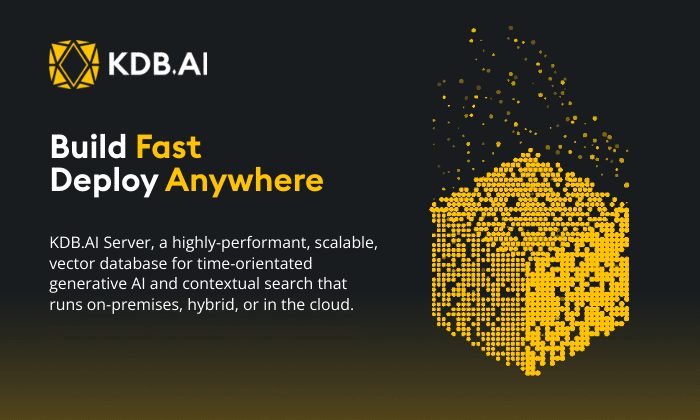by Jessica Villa
In a world characterized by continuous, rapid change, organizations need to react as quickly as possible to both survive and outdo their competition. In manufacturing, the onset of the COVID pandemic provoked an acceleration in digital transformation across many areas of Information Technology (IT) and Operational Technology (OT), as it created a new urgency to guarantee business continuity and improve customer experience.
However, recent research shows that with the explosion of digital transformation in Industrial IoT, manufacturing companies must now deal with more and more complex factories, diverse data environments and new processing needs that led to a whole set of new data and business challenges.
From Reactive to Proactive
The manufacturing sector has adopted technology as an enabler for innovation and response to change, but this adoption has produced complex ecosystems and an explosion of data volumes and velocity in plants.
Unsurprisingly, the International Data Corporation (IDC) reported a steady forecast growth in Global Spending for Digital Professional Services and Continuous Analytics Software from 2020 throughout 2025, stating in that “Real-time data streams and processing will become the norm, not the exception.”
These technologies — standardized connectivity systems, stream event processing and streaming analytics — allow manufacturing companies to collect, process and analyze data and enable Continuous Intelligence. During their keynote speech at the recent Industry of Things World USA event, Przemek Tomczak (SVP of IoT at KX) and Ricardo Buranello (VP of IoT Platforms at Telit) explained why Continuous Intelligence is so critical to manufacturing organizations.
By automating processes and enabling real-time visibility of processes and operations, Continuous Intelligence provides real-time situational awareness and transforms big data into actionable insights. It continuously updates your view on what is happening, allowing companies to make new assessments and adjusts old ones through predictions in real-time.
According to Przemek, organizations want to be able to answer questions like: How is my asset performing right now? How is this asset going to perform? Is it going to break and cause me any delay within the production process? How can I make this asset run longer? All these questions are key to an organization that is looking to improve yield, efficiency and productivity, enable quality processes, and ultimately deliver a better service to its customers.
With better Continuous Intelligence, organizations can take proactive, and not just reactive, decisions on aspects such as how to improve yield, quality of the product, efficiency of the plant and customer experience, and cost reduction.
What Does Continuous Intelligence Deliver?
In their discussion, Przemek and Ricardo highlighted how Continuous Intelligence creates greater situational awareness and enables real-time decision making that leads to valuable business outcomes.
For example, Ricardo showed a real-life example of how Continuous Intelligence was enabled in a medical technologies company by utilizing Telit’s DeviceWise and KX to integrate machines for quality adjustments, control overall equipment effectiveness (OEE) and automate preventive maintenance scheduling. As a result, the firm was finally able to gain full visibility on plant productivity through real-time analysis of their cycles, reduce times on maintenance issues and improve quality of operations, and improve overall plant efficiency by automating and predicting maintenance scheduling.
With Continuous Intelligence, organizations can detect anomalies before they cause irreversible damage to a production run, step or an asset, and help avoid excessive maintenance costs and reduce waste.
Challenges in Achieving Continuous Intelligence in Manufacturing Organizations
There are some challenges to achieving the promise of Continuous Intelligence. In their keynote speech at the IoT event, Przemek and Ricardo identified five major areas that a company needs to consider in realizing Continuous Intelligence:
- Lack of connectivity standards. Factories are highly complex and heterogeneous environments which host many different types of equipment and sensors, communication protocols and standards, HMI, MES systems etc. All of these have to talk to each other and exchange information, at scale, and in real-time. This is hardly achievable without connectivity standards, and indeed very often manufacturing organizations require a certain amount of customization code in order to integrate all these different devices, (which results in loss of resource time and cost investments.) The good news is that companies like Telit and KX can help standardize and automate real-time data collection, processing and analytics for better decision making.
- Data is siloed in different places. You need time-series data (measurements, events, alerts) to represent aspects of our physical world. But that time-series data must include data in real-time to understand what is happening now, along with historical data to grasp what happened in the past and for context. Organizations have different legacy systems to handle streaming and historical data, and this makes it hard to get a consolidated and comprehensive view of the physical world and how it can be improved.
- Data is not captured fast enough and with enough granularity. The more sensors are introduced in factories, the higher the volume and velocity of the data being generated. This requires a lot more precision and better resolution in the way the data is captured, processed, and analyzed.
- Analytics are not quick enough for local decision making. To produce intelligent and actionable insights where and when it matters to affect decisions and actions, systems must be able to process and analyze data — in the field, factory, vehicle or the edge — in motion and at rest. Common processing and analytics can do this to a degree, but Intelligent Edge systems are better optimized to ingest and produce insights in real-time more efficiently, quickly and effectively.
Conclusion
Organizations today can benefit from technology ecosystems that work together to solve all these new challenges.
However, in order to realize the benefits of this technology — and the Continuous Intelligence it enables — companies must shift their way of thinking and move towards a microsecond mindset, where in-time decision making counts, and reactive response approaches are replaced by proactive and continuous actions to achieve success.
Consider this from Ricardo, who has spent most of his career living, breathing and experiencing the great advancements in manufacturing: “The most successful factories are the ones who embrace data. It is time for a switch in mentality. We need to go from, ‘If it’s not broken, don’t touch it’ to ‘If it is working, how can I improve it?’”







